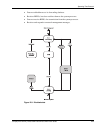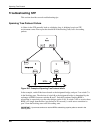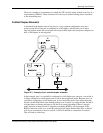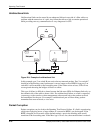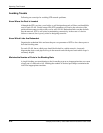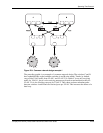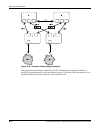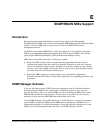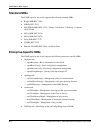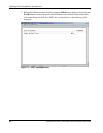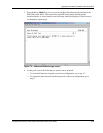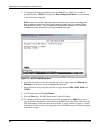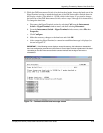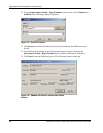
Compaq ProLiant BL p-Class GbE Interconnect Switch User Guide E-1
COMPAQ CONFIDENTIAL Codename: Vanilla Part Number: 263280-001 Last Saved On: 4/23/02 10:16 AM
E
SNMP/RMON MIBs Support
Introduction
Management and counter information are stored in the switch in the Management
Information Base (MIB). The switch uses the standard MIB-II Management Information Base
module. Values for MIB objects can be retrieved from any SNMP-based network
management software.
In addition to the standard MIB-II, the switch also supports its own proprietary enterprise
MIB as an extended Management Information Base. The proprietary MIB is retrieved by
specifying the MIB Object-Identifier (OID) at the network manager station.
MIB values can be either read-only or read/write variables.
• Read-only MIB variables can be constants that are programmed into the switch or
variables that change while the switch is in operation. Examples of read-only constants
include the number and types of ports. Examples of read-only variables are the statistics
counters, such as the number of errors that have occurred or how many kilobytes of data
have been received and forwarded through a port.
• Read/write MIB variables are usually related to user-customized configurations.
Examples include the IP address of the switch, Spanning Tree Algorithm parameters, and
port status.
SNMP Manager Software
If you use third-party vendor SNMP software to manage the switch, a diskette listing the
propriety enterprise MIBs for the switch can be obtained by request. If your software
provides functions to browse or modify MIBs, you can also change the MIB values (if the
MIB attributes permit the write operation). This process can be quite involved, however,
because you must know the MIB OIDs and retrieve them one by one.
Use an SNMP manager, such as HP OpenView or Tivoli NetView, to access the enterprise-
specific MIBs. Compile the MIBs into the MIB database and then use a MIB browser to
navigate through them. For detailed information, access the individual descriptions of each
MIB or go to the documentation that came with your SNMP manager software.



